Mexico › Best Places to Stay in Mexico City
Updated: December 26, 2025
My Favorite Mexico City Hotels
• 5-star: Las Alcobas
• 4-star: H21
• 3-star: NaNa Vida
• For families: H21
• For couples: Casa Polanco
• B&B: El Patio 77
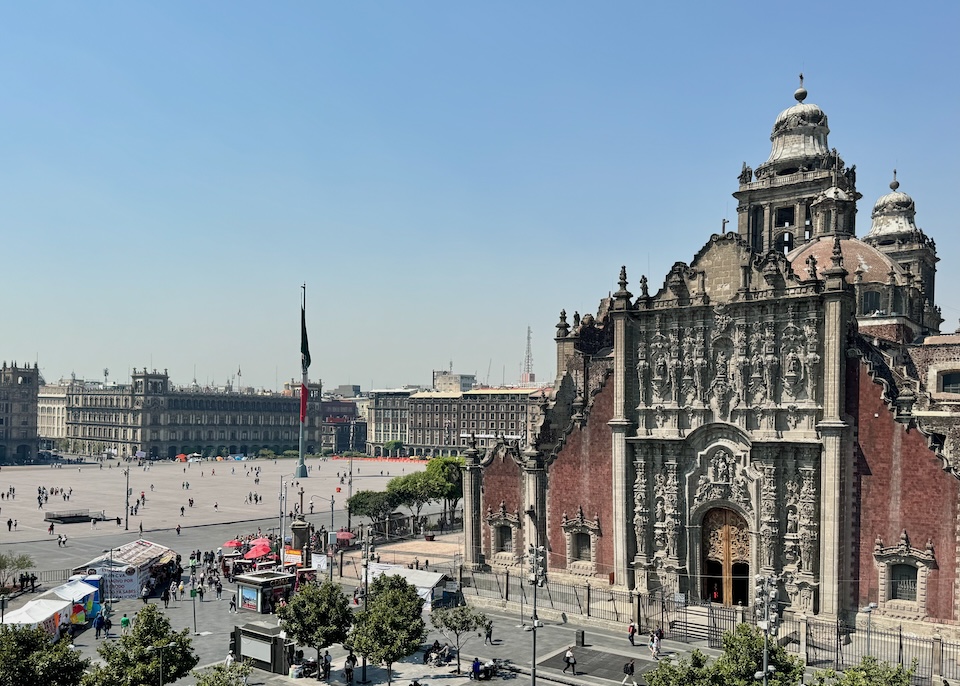
The ornate eastern façade of the Metropolitan Cathedral right next to the Zócalo in Centro Histórico.
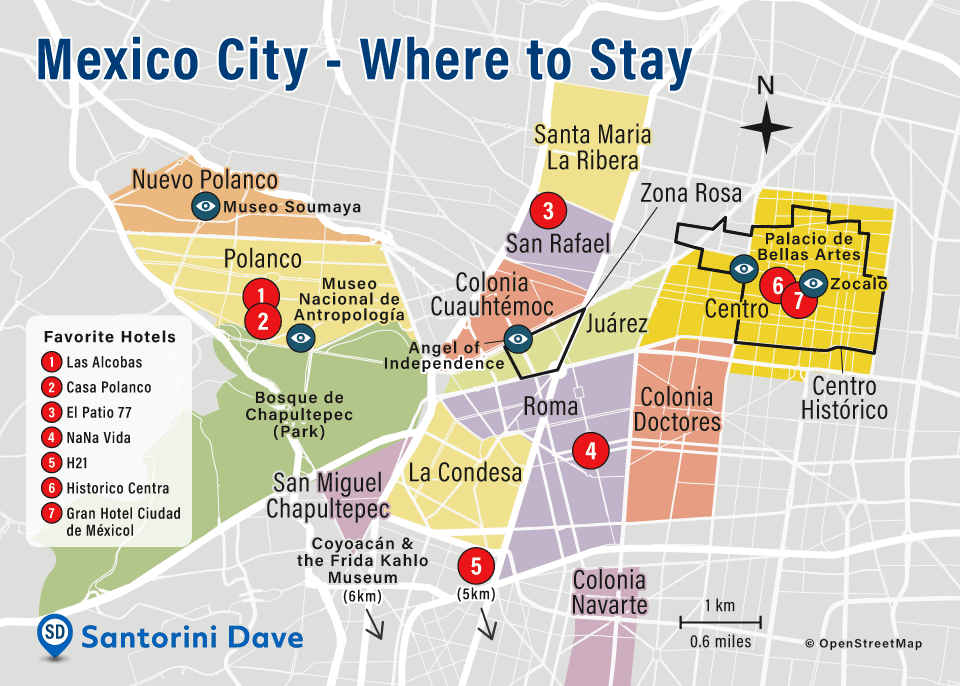
Hotels on Map: 1. Las Alcobas • 2. Casa Polanco • 3. El Patio 77 • 4. NaNa Vida • 5. H21 • 6. Histórico Central • 7. Gran Hotel Ciudad de México
Best Areas to Stay in Mexico City
The largest city in North America, Mexico City proper has almost a million more inhabitants than New York City, while the Greater Mexico City area is home to over 21 million. This vast metropolis occupies a bowl-shaped valley between the Sierra Madre mountain ranges. But even at its lowest point, Mexico City takes our breath away – it sits at an altitude of 2,250 meters, one of the world’s highest capital cities. Mexico City (often shortened to CDMX) can be a little bewildering, made up of dozens of distinctive colonias (neighborhoods), from the residential enclaves of the well-heeled to shiny business districts and from emerging arty enclaves to traditional neighborhoods where time seems to stand still.
We love Mexico City. There is no place quite like it, and we could spend our lifetimes exploring it. Fortunately, our favorite colonias and important historical and cultural sites can be visited over a few days. The city is easy enough to navigate with an excellent metro system plus inexpensive, ubiquitous taxis. Ubers are also plentiful, affordable, and convenient – especially great for returning to our room after a night on the town.
The heart of CDMX is the Centro Histórico, a walkable grid of streets surrounding the Zócalo (the main square), overlooked by the Metropolitan Cathedral and the Palacio Nacional with its government offices. Besides the handsome colonial architecture, great street food, excellent traditional Mexican restaurants, and two good markets on its western fringes – the Mercado de San Juan (for food) and the Mercado Artesanías La Ciudadela (for crafts), this neighborhood is rich in cultural attractions. Two not to be missed, particularly for those into art, include the Museo Mural Diego Rivera and the Palacio de Bellas Artes. Accommodations in the center tend to fall into the budget and midrange categories.

The historic Gran Hotel Ciudad de México in Centro Histórico.
Adjoining the Centro Histórico to the west is compact, wedge-shaped Juárez, largely residential with a good mix of a growing hipster scene, the city’s primary LGBTQ+ district (Zona Rosa), and traditional cantinas. Its northern part is the famous, gay-friendly Zona Rosa – one of the city’s biggest nightlife districts, dotted with bars and clubs. Hotels are mostly mid-range, with some boutique options.
Just north of the Zona Rosa, across the busy road Avenida Paseo de la Reforma, is Colonia Cuauhtémoc, a triangle-shaped, skyscraper-studded neighborhood whose lifeblood is commerce and business. An outdoor art gallery and a historic mansion-museum aside, there are few sights to speak of, but the international dining scene here is excellent, and the bars here are popular with office workers. Here we found a good concentration of international hotel chains, largely aimed at business travelers.
Adjoining Colonia Cuauhtémoc to the north are two residential, arty colonias with a very local feel: San Rafael and Santa Maria La Ribera, separated from San Rafael by the street Avenida Ribera de San Cosme. Both are very walkable and dotted with an interesting mix of late 19th-century mansions and modernist apartment buildings. Between them, the two neighborhoods have the lion’s share of contemporary art galleries. San Rafael is dotted with vintage theaters. Street food is terrific here, and accommodations consist largely of small boutique and midrange hotels.

The sunny Oaxaca Suite at the eco-chic B&B, El Patio 77, in the untouristy San Rafael neighborhood.
South of Juárez, across the main Avenida Chapultepec, is Roma, a large colonia divided into Roma Norte (north) and Roma Sur (south). Rapidly gentrifying, it’s a curious mix of traditional Mexican life and youth culture, reflected both in its architecture and mix of low-key and gourmet dining and contemporary art galleries. Adjoining Roma to the west is La Condesa, one of Mexico City’s more upscale residential neighborhoods. It’s compact, quiet, walkable, has a good international dining scene, and is close to the Bosque de Chapultepec. Boutique hotels dominate their accommodations.
Bordering La Condesa to the west is San Miguel Chapultepec, a small, triangle-shaped residential neighborhood with a contemporary art gallery, very low-key dining scene, and just a handful of budget accommodations. Its main draw is its proximity to the Bosque de Chapultepec, the huge urban forest it adjoins – not just CDMX’s most popular green space, but also home to the country’s best anthropology museum and a handful of other, family-friendly attractions.
Just north of the Bosque de Chapultepec is Polanco, Mexico City’s most exclusive neighborhood, complete with the best fine dining (including several Michelin-starred restaurants), designer boutiques, and the city’s biggest concentration of 5-star hotels. Immediately north is rapidly developing Nuevo Polanco, home of the amazing Museo Soumaya.
Coyoacán, far to the south of the city, is a very traditional residential neighborhood, complete with colonial architecture, cobbled streets, and attractive twin plazas. It’s far from the city’s other attractions but great for experiencing a slice of local life. There are low-key accommodations in the form of family-run guesthouses and small boutique hotels, and equally low-key dining, as well as one massive attraction – the Frida Kahlo Museum, and one smaller one – the Leon Trotsky House.
Other colonias worth mentioning include the edgy, working-class enclave of Xochimilco, also to the south of the city, with its centuries-old canals that go back to Aztec rule. Foodies may wish to check out the taco stands of Colonia Narvarte, to the south of Roma Sur, and the Mercado de La Merced in Merced, adjoining the Centro Histórico to the east. Finally, Colonia Doctores, just south of the Centro Histórico, is a bit of a sketchy area, but it’s also home to lucha libre (Mexican freestyle wrestling). Visit for a bout, a beer, and some tacos, but stay elsewhere overnight.
Best Places to Stay in Mexico City
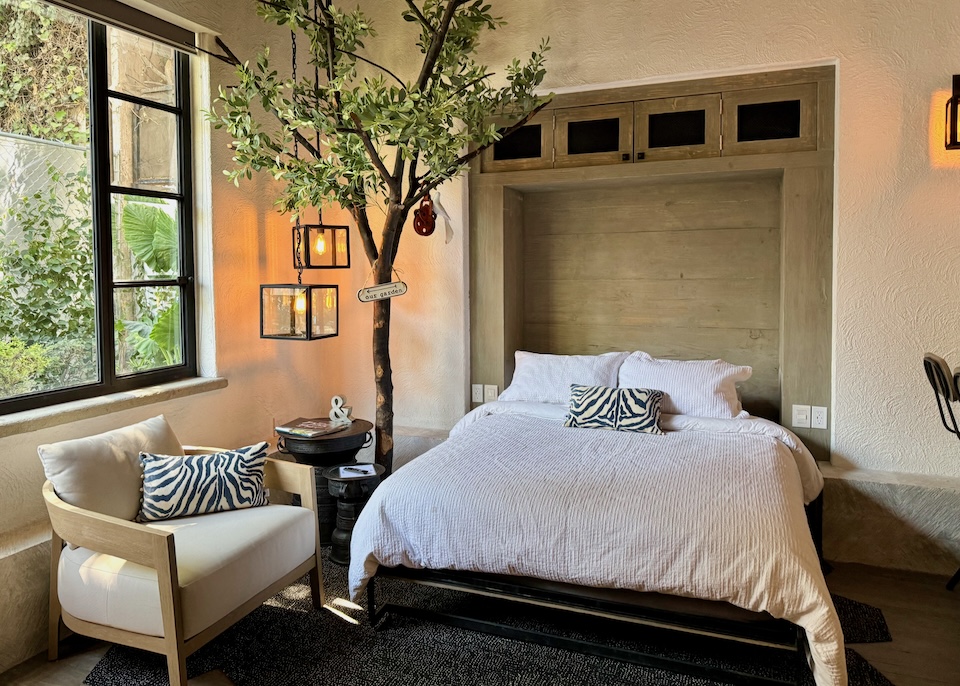
The whimsical Sabiduría Suite at H21 Hospedaje Boutique in the Coyoacán neighborhood.
- Our Favorite Luxury Hotels in Mexico City
Las Alcobas • St. Regis • Four Seasons • Gran Hotel Ciudad de México • Hyatt Regency Mexico City- Our Favorite Boutique Hotels in Mexico City
H21 Hospedaje Boutique • Casa Polanco • La Valise • Histórico Central- Our Favorite Midrange Hotels in Mexico City
Histórico Central • El Patio 77 • Zócalo Central • Hotel Catedral • NaNa Vida- Our Favorite Hotels in Mexico City for Couples
Las Alcobas (ages 13+ only) • Octavia Casa (ages 12+ only) • Casa Polanco • La Valise • Four Seasons- Our Favorite Hotels in Mexico City for Families
• H21 Hospedaje Boutique • St. Regis • Hyatt Regency • InterContinental Presidente • Hilton Reforma
Best Areas in Mexico City for…
Best Area in Mexico City for First-Timers: Centro Histórico or Roma Norte
If you want to be at the center of the action with easy access to the Zócalo, the Cathedral, and major historic landmarks, stay in the Centro Histórico. It is intense, historic, and very walkable. For a more relaxed, “neighborhood” feel with tree-lined streets, incredible cafes, and the city’s best boutique dining, choose Roma Norte. Polanco is the best choice if you prefer high-end luxury, designer shopping, and Michelin-starred dining, though it feels more international than traditionally Mexican.Best Neighborhoods in Mexico City for Sightseeing: Centro Histórico, San Miguel Chapultepec, Coyoacán, San Rafael, Santa Maria La Ribera
The Centro Histórico is studded with historical sights, as well as some of the city’s most important art museums. Staying in San Miguel Chapultepec or Polanco will put you within walking distance of the best archaeological museum in the whole country. Coyoacán is the place to head to if you’re a fan of Frida Kahlo and her art. If it’s contemporary art that you’re after, then a visit to CDMX isn’t really complete without checking out the galleries in San Rafael and Santa Maria La Ribera. If you’re interested in pre-Columbian history, then a visit to the archaeological site of Teotihuacan is an absolute must; ditto: a visit to Xochimilco and its Aztec-era canals. But it’s better to visit these spots for the day rather than overnight.
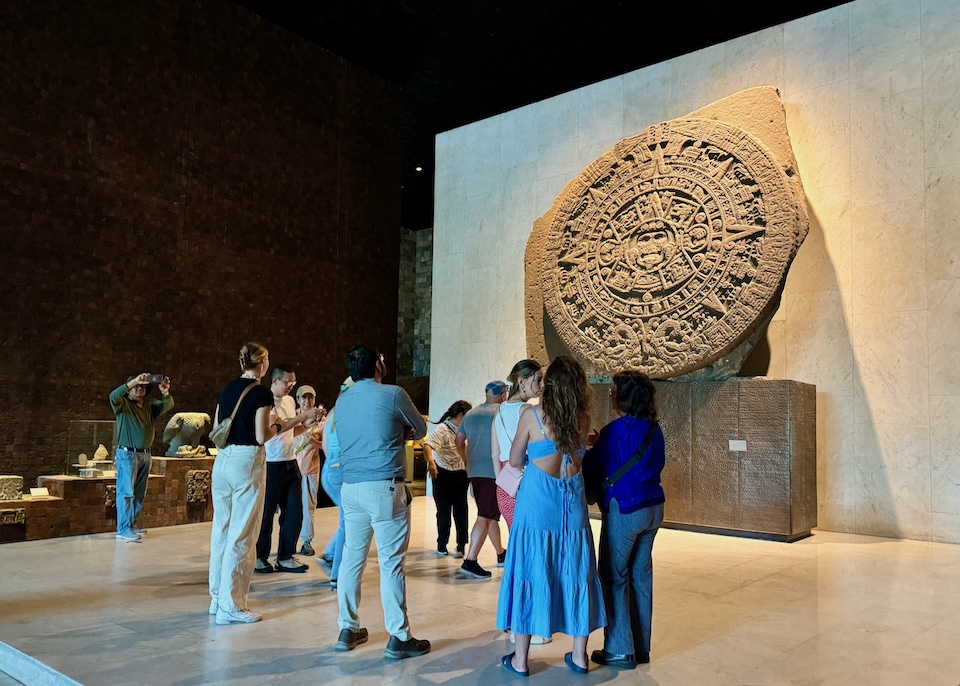
The Aztec sun stone is a must-visit, on display at the incredible National Museum of Anthropology, one of many museums in the sprawling Bosque de Chapultepec city park.
Best Neighborhoods in Mexico City for nightlife: Juárez, Polanco, Centro Histórico, Roma, La Condesa
There is something in Mexico City to sate every taste, and it’s no different when it comes to nightlife. The Zona Rosa in Juárez is famous for its LGBT-friendly nightclubs and bars. Polanco has a more exclusive clubbing scene and upscale wine and cocktail bars. Roma is the epicenter of hipster culture, with some of the most cutting-edge bars and clubs in town. La Condesa’s scene is more mellow and popular with young professionals, and ranges from craft beer pubs and whiskey bars to rooftop cocktail patios and traditional cantinas. Centro Histórico has some wonderful bars with a view as well as dedicated mezcalerias (mezcal bars) for serious connoisseurs of mezcal.Best Neighborhoods in Mexico City for Food and Restaurants: Centro Histórico, Polanco, Roma, La Condesa, Chapultepec, Juárez, San Rafael, Santa Maria La Ribera, Colonia Narvarte
The Centro Histórico is known for its decades-old restaurants specializing in traditional Mexican food, as well as its street food. San Rafael and Santa Maria La Ribera also boast excellent street food, while Colonia Narvarte is particularly renowned for its taco stalls. Chapultepec and Juárez are both good bets for international dining, and so are Roma, La Condesa, and Polanco, the former two dotted with trendy cafes and the latter well-known for its high-end dining and proliferation of Michelin-starred restaurants.Best Neighborhoods in Mexico City for Families: Polanco, Juárez, Colonia Cuauhtémoc, La Condesa
If you’re traveling with kids and looking to minimize culture shock, then Polanco is a good neighborhood to base yourself. Its advantages include its plethora of family-friendly, high-end hotels, an international dining scene, and its proximity to the Bosque de Chapultepec with its kid-centric attractions, such as the zoo, Children’s Museum, and Natural History Museum. Juárez and Colonia Cuauhtémoc also have the advantage of numerous international dining options, high-end and mid-range hotels with ample facilities, and proximity to Bosque de Chapultepec. Also near the Bosque, La Condesa leans more towards boutique lodgings with fewer family-friendly facilities, but it does have an attractive park of its own, popular with local families.
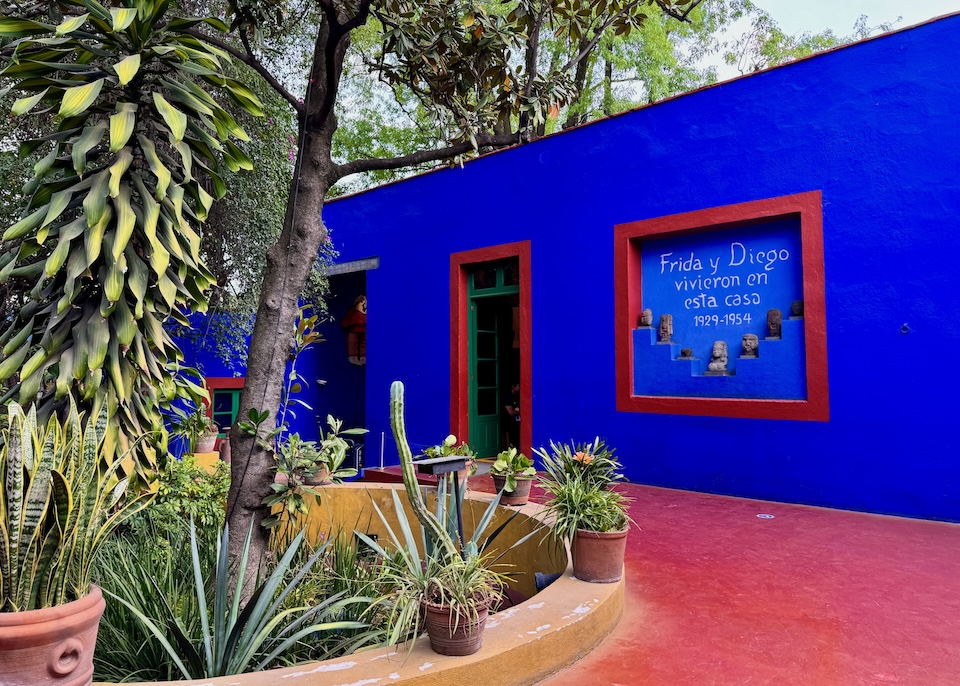
The Frida Kahlo Museum in Coyoacán is the home where Kahlo was born, where she lived, and where she died. The museum houses a few of Frida and Diego’s paintings, but mostly offers a glimpse into her private life with her wheelchair, corsets, dresses, and even the artist’s ashes.
Most Romantic Neighborhoods in Mexico City: Centro Histórico, Polanco, Coyoacán
We find it hard to beat the historic center, with its beautiful colonial architecture, intimate boutique hotels, and white-linen traditional dining for a romantic vacation. If you’re looking for something more upscale, the five-star hotels with Michelin-star dining in Polanco may be just the ticket. Or perhaps you prefer the idea of wandering the subtly-lit cobbled streets and checking out the art of Frida Kahlo in historic Coyoacán before returning to a snug boutique guesthouse.Best Neighborhood in Mexico City for a Local Vibe: San Rafael, Santa Maria La Ribera, Roma, Coyoacán
We recommend the refreshingly untouristy San Rafael and Santa Maria La Ribera colonias with their terrific street food, unpretentious mom-and-pop restaurants, and an interesting mix of architecture – great for living like a local. If you’re looking for something with more of a hipster edge, then Roma is a great place to stay, with its unique vibe, plenty going on, and a mix of traditional and contemporary Mexican culture. Coyoacán is less convenient in terms of proximity to the city center, but it’s a unique neighborhood with striking colonial buildings, cobbled streets, and a very local dining scene.Best Neighborhoods in Mexico City for Shopping: Centro Histórico, Polanco, San Rafael, Roma, Coyoacán
If you’re looking for quality handicrafts from all over Mexico, the Mercado Artesanias La Ciudadela on the western fringes of the Centro Histórico is an excellent place to start. The nearby Mercado San Jose sells an excellent range of Mexican cooking ingredients, including those hard to find back home, while Fábrica Social works with several women’s collectives across the country and sells textiles of excellent quality. For fashion by international and Mexican designers and concept shopping, look no further than the boutiques along Avenida President Masaryk in Polanco. Contemporary art for sale can be found in the small art galleries of San Rafael. In Roma, Chic by Accident is a good source of 20th-century Mexican design items, while Casa de Luna in Coyoacán is a fair trade store specializing in jewelry, ceramics and textiles.Safest Areas of Mexico City
While CDMX may have a bit of a sketchy reputation, the neighborhoods frequented by visitors are generally safe, though it pays to be aware of your surroundings and be cautious after dark. The safest colonias include Polanco, La Condesa, Roma, Juárez, Zona Rosa, Coyoacán, San Rafael, and Centro Histórico. That said, opportunistic pickpocketing does happen, particularly in the downtown area around the Zócalo and the markets. Standard precautions apply: don’t flash lots of cash, expensive jewelry, or electronic gear, and avoid deserted, poorly-lit streets at night. Use Uber or DiDi rather than hailing taxis on the street, especially at night. It provides a digital trail and a set price.Unsafe Areas of Mexico City
As a rule of thumb, steer clear of neighborhoods to the very north or very south of Mexico City, particularly after dark. Avoid dicey Tepito, Mexico City’s black market area just north of Centro, Iztapalpa, a huge southern neighborhood with high assault rates, and Ciudad Neza, a large urban sprawl to the east of the airport with high levels of poverty and violent crime. Then there are neighborhoods that are okay during the day, as long as you take standard precautions. Explore Mercado La Sonora in the Merced colonia adjoining Centro, but watch out for pickpockets, both there and around the Centro Histórico. If you go to Colonia Doctores’ Arena México to watch a lucha libre (costumed fight), don’t hang around afterward, and do take a taxi back. Avoid Tlalpan, Xochimilco, and Tlatelolco after dark.

The ancient, pre-Aztec pyramids of Teotihuacan sit just outside of Mexico City. Visiting by hot air balloon is incredibly popular and allows a birds-eye view of the monumental architecture. Visiting on foot is, of course, a more economical option.
Staying in Centro Histórico

Our favorite colonia for first-timers to Mexico City. Built on the ruins of the Aztec capital Tenochtitlan, the oldest part of present-day Mexico City is the expansive Centro Histórico – the closest CDMX comes to having a downtown. It’s centered on the large, historic Zócalo square, busy with souvenir sellers and street performers. The surrounding grid of streets is lined with handsome colonial architecture dating from the 16th century onwards, many must-see landmarks, such as the Museo Nacional de Arte, Casa de los Azulejos, Palacio de Bellas Artes, and Templo Mayor, as well as some excellent restaurants, specializing in traditional Mexican cuisine. Good public transport connections via the Zócalo and Allende metro stations.
Best Hotels in Centro Histórico
Staying in Polanco

Along with Centro Histórico, Polanco is a top choice for first-time visitors. Mexico City’s most affluent neighborhood, upscale Polanco is where you’ll find the bulk of the city’s luxury hotels, plus Presidente Masaryk, the city’s answer to Rodeo Drive, lined with designer boutiques. The smart, well-kept streets are also home to some our our favorite fine dining hotspots; this is where you’ll find Michelin-starred Pujol – one of the world’s top restaurants, among other stellar options. The heavyweight museums of the Bosque de Chapultepec are an easy walk south of Polanco. Just north of Polanco, separated by Avenida Ejército Nacional, is Nuevo Polanco. Formerly an industrial area, this colonia is the most rapidly developing zone in the city. This is where you’ll find the sleek, futuristic-looking Museo Soumaya (pictured above), plus an abundance of new condos, theaters, restaurants, and more. Polanco and Nuevo Polanco have only one metro stop serving both colonias; unsurprisingly, the station shares the same name, Polanco.
Best Hotels in Polanco
- Casa Polanco
- Las Alcobas
- Hyatt Regency Mexico City
- JW Marriott
- InterContinental Presidente
- W Mexico City
Staying in La Condesa
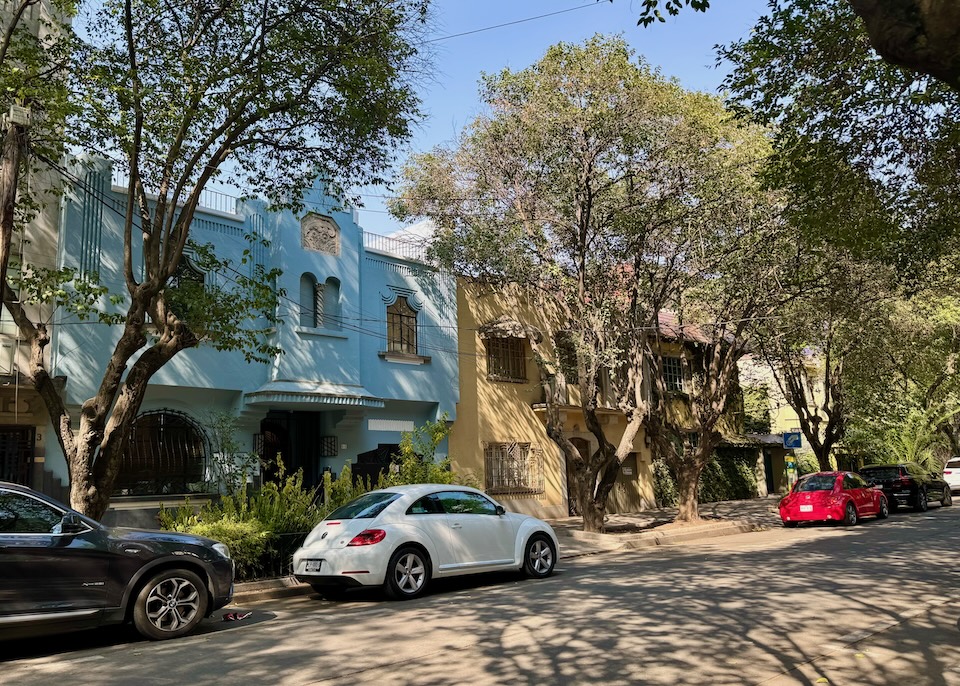
In the southwest of the city, this compact neighborhood used to be a quiet, residential, middle-class enclave. While it’s still largely residential, it’s rather upscale with appealing Art Deco and modern buildings. La Condesa has one of the best dining scenes in the city, with global cuisines and Mexican fine dining well represented. One of the most popular neighborhoods for tourists, as it minimizes the culture shock, it’s adjoined by the vast Bosque de Chapultepec Park and has a beautiful park of its own, Parque Mexico, complete with street food vendors and promenading families. While it’s light on attractions, La Condesa makes a good base for exploring the city. Chapultepec and Juanacatlán are the closest metro stops.
Best Hotels in La Condesa
Staying in Roma

We adore Roma. This expansive neighborhood, divided into Roma Norte and Roma Sur, has also been largely residential for most of its existence. Still gritty around the edges, a bit down-at-heel compared to neighboring La Condesa, and with a reputation as a bohemian enclave, Roma has been undergoing gentrification in recent years. It’s one of the most interesting parts of the city, with a mix of old-time residents and youth culture, reflected in its melange of 19th-century mansions, quirky art galleries, busy markets, hip cocktail bars, and specialty coffee shops. It’s a walkable neighborhood and a popular base for tourists due to its relative proximity to attractions in nearby parts of the city, plus good transport connections. Chapultepec, Sevilla, and Colonia Cuauhtémoc are Roma Norte’s metro stops, while Roma Sur is served by Chilpacingo and Centro Médico.
Best Hotels in Roma
Staying in Juárez and Zona Rosa
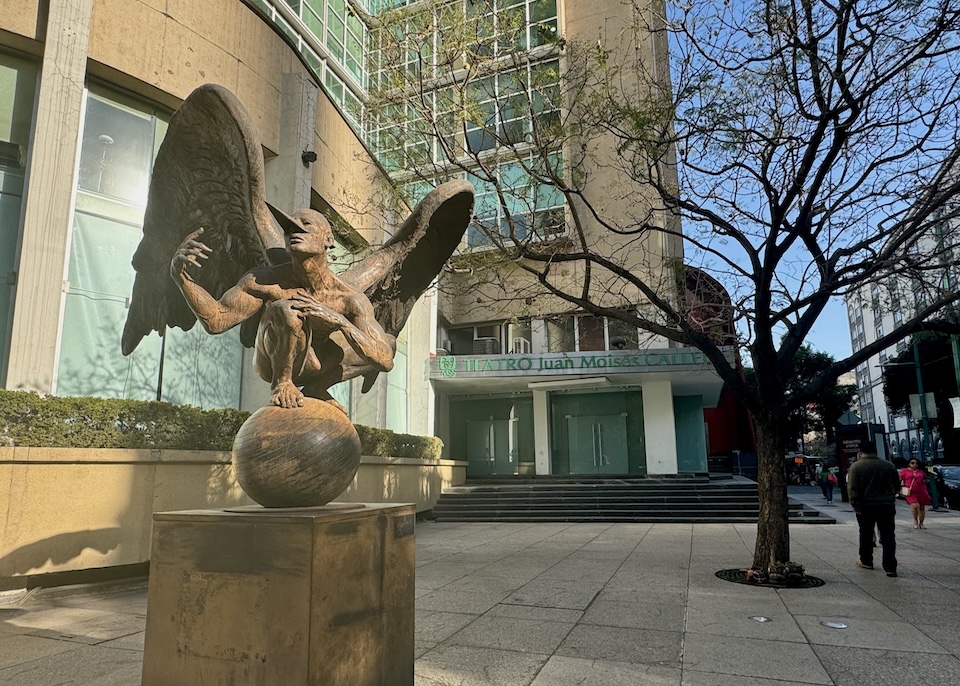
This compact, triangle-shaped neighborhood was one of Mexico City’s most exclusive before WWII. Afterward, many of the beautiful buildings were left in a state of genteel decay until a young, bohemian population injected some new life into the place after being forced out by rising rents in Roma and La Condesa. The result is a neat collection of quiet, tree-lined streets dotted with late-19th-century mansions, with a small-town feel and multiple generations of traditional families mixing with young hipsters at vintage luncheonettes, buzzy cafes, and speakeasies serving cocktails. The northern fringe of Juárez is where you’ll find a decent concentration of bars and nightclubs, collectively known as the Zona Rosa, as well as a few boutique hotels. Juárez is well-located for the exploration of Roma, Centro Histórico, Chapultepec, La Condesa, and Colonia Cuauhtémoc on foot, and connected to the rest of the city via the Sevilla and Cuauhtémoc metro stops.
Best Hotels in Juarez / Zona Rosa
Staying in San Miguel Chapultepec
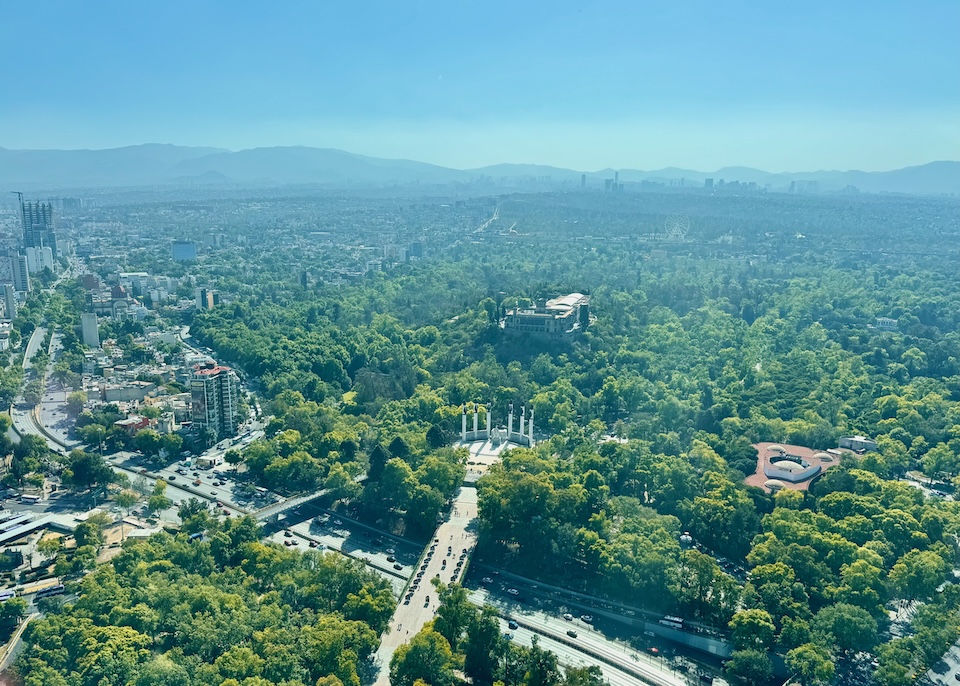
Another arty neighborhood in the making, triangle-shaped San Miguel Chapultepec sits next to the Bosque de Chapultepec, a vast urban forest with running and cycling paths. Bosque de Chapultepec is home to Mexico’s City most important museums, including the show-stopping Museo National de Antropología, devoted to the wealth of Mexico’s pre-Hispanic cultures, plus a zoo, a Children’s Museum, and a Museum of Natural History, also popular with families. The neighborhood is pretty low-key, with a contemporary art gallery, a handful of unpretentious eateries, and several inexpensive accommodations. Constituyentes, Tacubaya, and Juanacatlán are the metro stops here.
Best Hotels in San Miguel Chapultepec
Staying in Colonia Cuauhtémoc
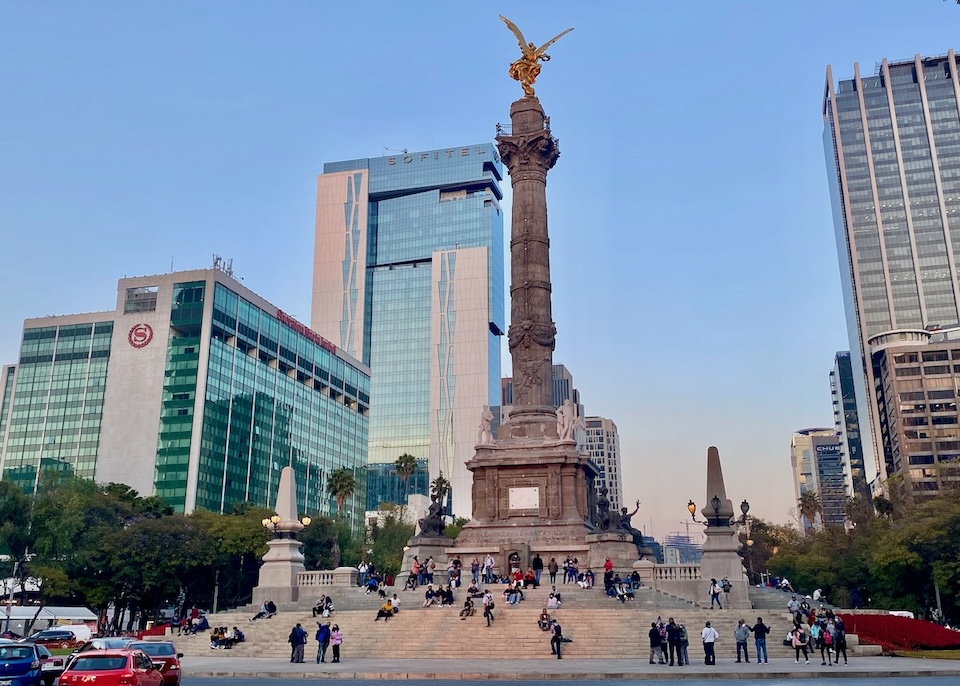
Not to be confused with Cuauhtémoc, the municipality that includes most of Mexico City’s central neighborhoods (including Centro Histórico, Las Condesa, Roma, and more), Colonia Cuauhtémoc is a trangle-shaped neighborhood directly north of Juárez, south of San Rafael, and east of Bosque de Chapultepec. There’s some spillover from Zona Rosa to the south, with a few bars found in this neighborhood, across the main Avenida Paseo de la Reforma. Largely an office and commerce district, Colonia Cuauhtémoc benefits from a lively international dining scene, its restaurants spanning the globe and located mostly along Calle Rio Lerma and the parallel Calle Panuco.
Best Hotels in Colonia Cuauhtémoc
Staying in Coyoacán
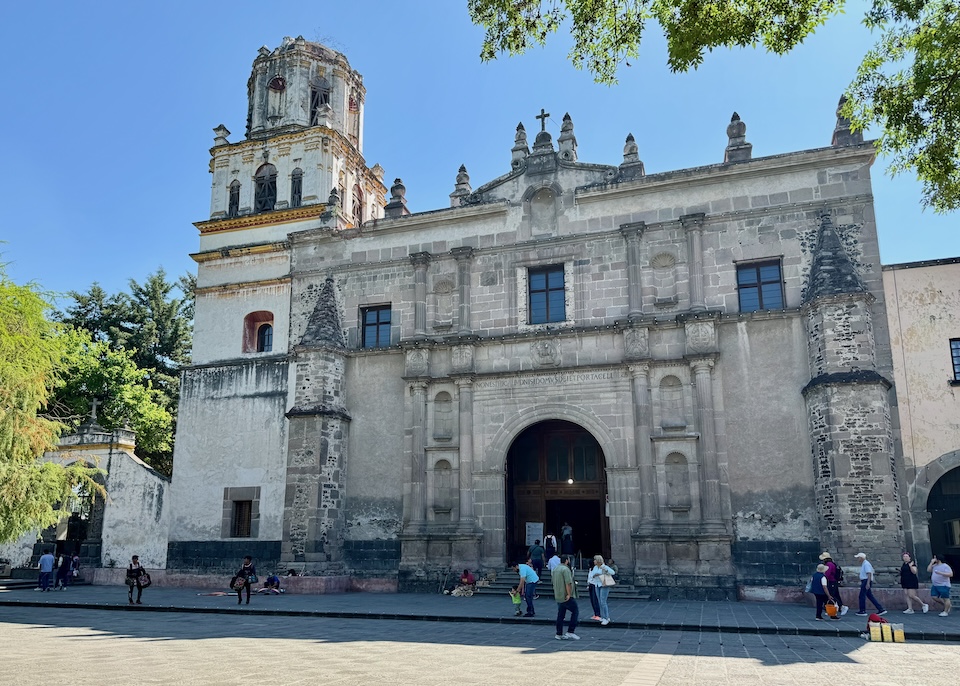
Before Mexico City expanded and incorporated outlying settlements into one big whole, Coyoacán was a colonial-era town and remains a rather quiet and traditional part of the city far to the south. It’s centered on the twin squares of Jardín Centenario and Plaza Hidalgo, popular with local families on weekends, while its cobbled streets and vintage architecture are a pleasure to explore, as is the Mercado de Coyoacán with its food stalls. The neighborhood is best known as the birthplace of Mexican painter Frida Kahlo, and her childhood-home-turned-museum attracts massive crowds of visitors. Nearby is another offbeat attraction: the Leon Trotsky House, where the Soviet revolutionary leader lived in exile and was killed by one of Stalin’s assassins. Dining is a mix of traditional Mexican restaurants and stalls, along with a few international options. Accommodations mostly consist of family-run guesthouses and a few boutique hotels. Coyoacán is the nearest metro stop.
Best Hotels in Coyoacán
- H21 Hospedaje Boutique
- Mansion Papilio
- Maria del Alma House
- Villa Alfonsina
- Ágata Hotel Boutique & Spa
Staying in San Rafael
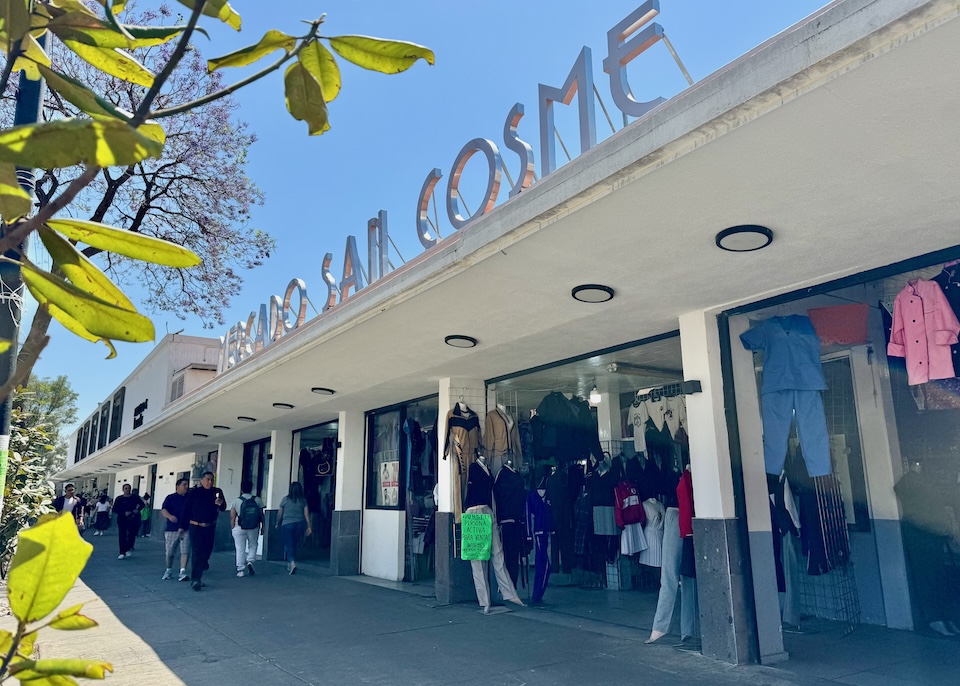
If you’re looking for a largely untouristy experience while being within walking distance of attractions, the artsy residential neighborhood of San Rafael has much to recommend it. The university campus gives San Rafael a youthful vibe, and the streets are dotted with vintage theaters, late-19th-century houses, and small mom-and-pop restaurants. You won’t find gourmet cuisine or much nightlife here, but you will find lots of excellent street food, particularly around Mercado de San Cosme. There are a couple of art galleries worth your time, including the contemporary art museum, Museo Experimental el Eco. Gentrification is slowly creeping in in the form of specialty coffee shops, but overall San Rafael feels like a refreshingly ‘local’ part of the city. San Cosme is the main metro stop.
Best Hotels in San Rafael
Staying in Santa Maria la Ribera
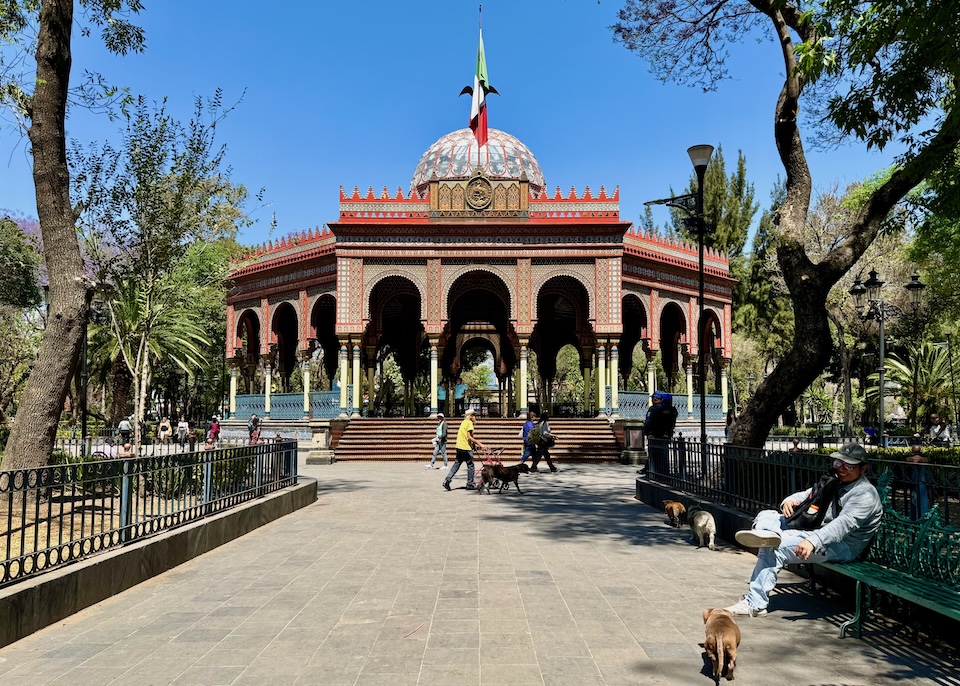
This compact, mostly residential neighborhood bordering San Rafael is centered on a tree-lined plaza, the Alameda, surrounded by food stalls with a loyal local following. The architecture is an interesting mix of down-at-heel, fin de siècle mansions, and modernist and Art Deco apartment blocks. It’s an arty, up-and-coming place with a unique vibe. Low-key attractions include a geology/dinosaur museum and the National University’s El Chopo Museum, which showcases edgy installations by local artists. Other sights include small contemporary art galleries and the Kiosko Morisco – a Moorish-style gazebo that hosts everything from rock gigs and poetry slams to ballroom dancing. Buenavista and San Cosme metro stops connect Santa Maria la Ribera to the rest of the city, and Centro’s attractions are within walking distance.
Best Hotels in Santa Maria la Ribera
Staying in Greater Mexico City
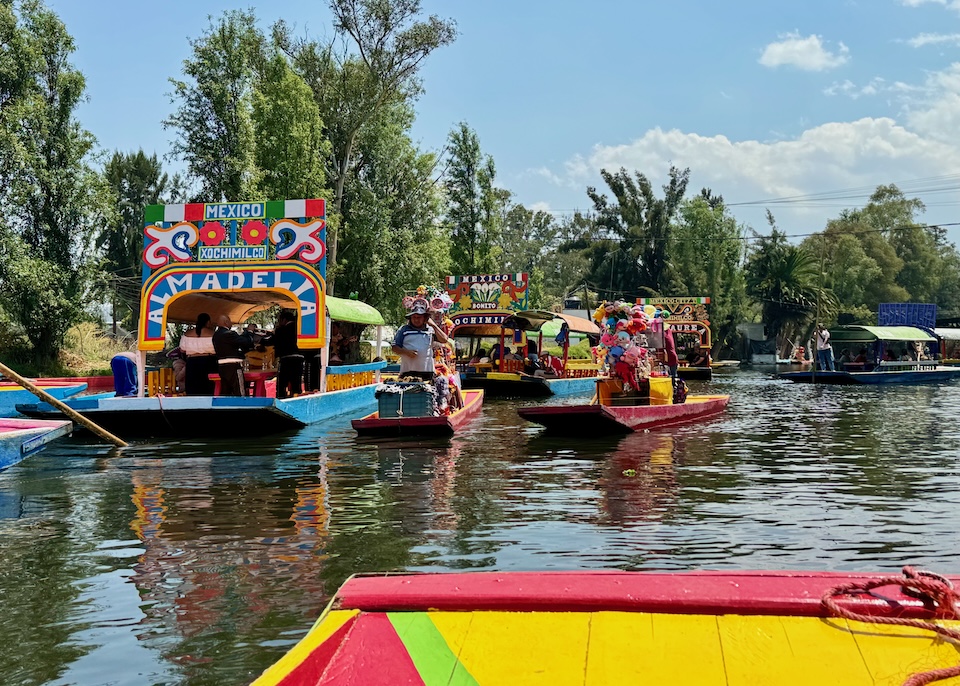
Several outlying neighborhoods in Mexico City are worth a daytime visit but can be sketchy at night or just not worth staying overnight in. To the northeast of Mexico City (though not technically part of the city) is the vast archaeological complex of Teotihuacan, one of the county’s top Pre-Hispanic sights, complete with intact pyramids; it’s well worth setting a day aside to go and see. At the very south of the city, head for Xochimilco (pictured above), a gritty working-class neighborhood with a village feel and tiny alleyways, to take a flat-bottomed boat tour of the centuries-old canals, once used by the Aztecs for transportation. South of Roma Sur, the residential Colonia Narvarte is known for its superb street food – particularly its taco stands. Adjacent to the southern border of the Centro Histórico, Colonia Doctores has a bit of a bad rep, but its Arena México is well worth a visit if you want to attend a lucha libre – Mexican freestyle wrestling – a unique and very local pastime. Mercado La Merced, just to the east of the Centro Histórico, is Mexico City’s largest produce market for traditional food; it’s also a red-light district in the evenings.
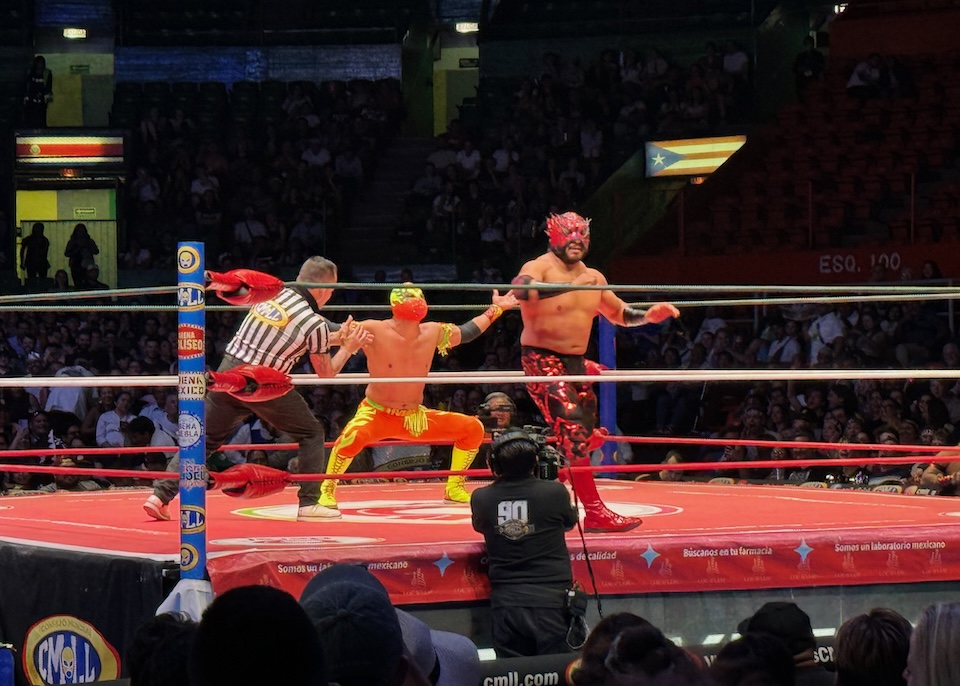
Lucha libre wrestling at Arena Mexico in Colonia Doctores. The neighborhood can get a little dicey at night, but several companies offer small-group guided tours to see the fights, often with a stop beforehand for tacos and mezcal. This is a super fun and safe way to see authentic lucha libre.